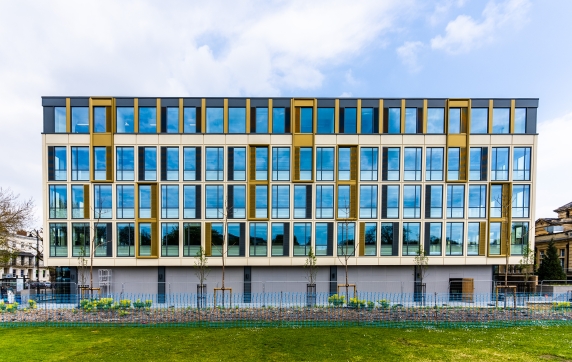Environmental Product Declarations (EPDs) are not particularly new in the construction sector – some building product manufacturers have been voluntarily calculating the carbon footprint of their products for several years; and using the results to demonstrate their sustainability credentials on specific projects where that is a priority.
What has changed recently though is the number of developers and main contractors demanding EPDs from manufacturers before they can even be included on tender documents. As an aluminium systems house, we’ve had requests this year from a high end London housebuilder and a big name in contracting, and that’s certainly the direction of travel.
Guidance on EPDs
It's no surprise then that the industry bodies have begun drafting guidance for members to help them provide EPDs on all their window, door and curtain wall systems to indicate their environmental impact. The CWCT (Centre for Window and Cladding Technology) is offering guidance on the calculation and interpretation of EPDs, while the CAB (Council for Aluminium in Building) is providing an average window EPD that can be used by members. Both are available to view online.
Included within the guidance the methodologies that companies need to use for modelling life cycle assessments and calculating the embodied carbon of their products in line with the methods in BS EN15978 (1).
Of course, the guidance goes beyond the product itself and encompasses sourcing and transporting raw materials, manufacturing, installation, use, maintenance, repair, refurbishment and end of life demolition, waste, disposal and recyclability.
What does it mean for the aluminium window and door market?
It seems almost certain that all aluminium systems houses are going to have to introduce product specific EPDs in the coming months and years – whether that is just in response to the demand from specifiers or because the government decides to make them mandatory as part of its commitment to net zero carbon and sustainability in construction. Certainly, they are already in development in parts of AluK, covering the scope: A1-4 (production), C1-4 (end of life) and D (resource recovery) for several of our products.
In broad terms, they are likely to add weight to the argument that aluminium is the most sustainable material for windows, doors and curtain walling, with 100% recyclability and 40+ year life spans for all products.
On a more detailed level though, I think they will inevitably trigger some changes in how raw material is sourced, where profiles and extruded and where and how products are painted and finished, because these are the areas where systems companies differ and where they will be looking to make carbon savings in order to leverage maximum competitive advantage through their EPDs.
For example, more consideration will need to be given to where the aluminium billets are sourced. Russia is largely out of the picture now, but UK made windows and doors still rely on billets sourced from China, India, UAE, and South Africa as well as Iceland and the EU.
These billets have different levels of embodied carbon, depending on the level of recycled content in the aluminium and how much renewable energy is used in production, as well as the different transport routes. With demand for aluminium soaring around the globe and the material having such an impressively long life span, there is actually growing shortage of scrap for recycling, so the real focus is likely to be on energy usage.
Similarly, the aluminium profile itself will come under greater scrutiny, with UK extruders potentially edging out their European competitors, purely as a way to reduce the carbon in the transportation journey.
The same will also be true of painting and finishing, with those aluminium companies that have their own paint plants on site having an inherent advantage over those who have to outsource and transport material to alternative powder coating plants.
Overall, I don’t think the aluminium window and door sector has anything to fear from EPDs - they simply standardise reporting so that clients and contractors can easily compare aluminium with PVC-U, timber and composites materials and allow them to fairly evaluate different aluminium products side by side.
Certainly, from AluK’s perspective, they are a positive step in terms of delivering quantifiable evidence of aluminium’s sustainability, and could potentially even help tackle the scourge of ‘greenwashing’ in construction.


